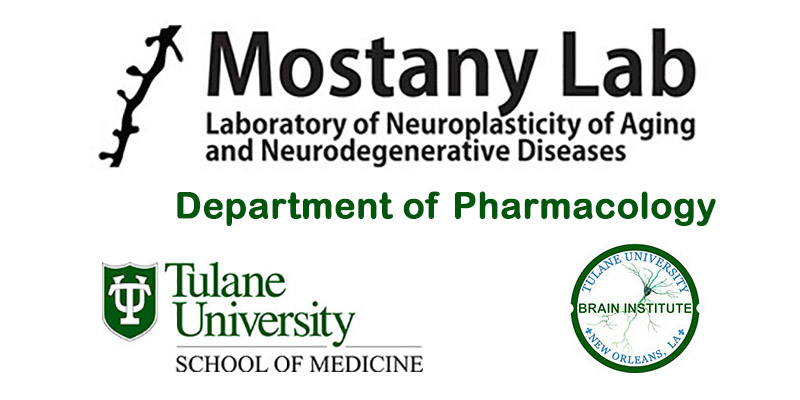
Welcome to the Mostany Lab!
News!
06/01/2018 – The lab, in collaboration with Dr. Fadok’s lab in the Department of Psychiatry at Tulane, receives the 2018 Tulane Brain Institute’s Marko Spark Innovation Research Fund Award
04/16/2018 – Kaeli defended her Honor’s Thesis. Congratulations!!!
03/16/2018 – Bailin’s, Heather’s, Emma’s, and Drew’s paper on density and dynamics of dendritic spines across the estrous cycle is published in Frontiers in Molecular Neuroscience!
Mostany Lab Assistants
at Work & Play
Cortical circuits show a certain degree of plasticity during normal brain functions that allows the formation of memories. This plasticity can be very different when the homeostasis of the brain is altered during aging and sensory deprivation, or because the impact of neurodegenerative diseases. Using cutting edge techniques and transgenic mice we study in vivo the dynamics of dendritic spines, i.e., the main site of excitatory inputs of information onto pyramidal neurons in the neocortex and the anatomical substrate for memory storage. The ability to follow chronically the same neurons for days – even for months – allows us to monitor when (temporal dynamics) and where (we focus our studies on somatosensory and motor cortex) synaptic plasticity is taking place. In addition, we study the electrophysiological properties of excitatory pyramidal neurons and inhibitory GABAergic interneurons in the cortex to detect age- and neurodegeneration-related deficits in their performance.
The main research directions of the laboratory are: 1) elucidating how the aging process impacts the way the brain forms and maintains synaptic connections to test the hypothesis that the dynamics of these connections are altered with age and lead to functional brain deficits; 2) extending the understanding on synaptic plasticity to a mouse model of Alzheimer’s disease to characterize the alterations in plasticity that accompany the progressive deposition of amyloid beta; 3) to understand the electrophysiology changes in pyramidal neurons and inhibitory interneurons in the cortex that underly the deficits in structural synaptic plasticity detected in the aging brain and in the AD brain.
